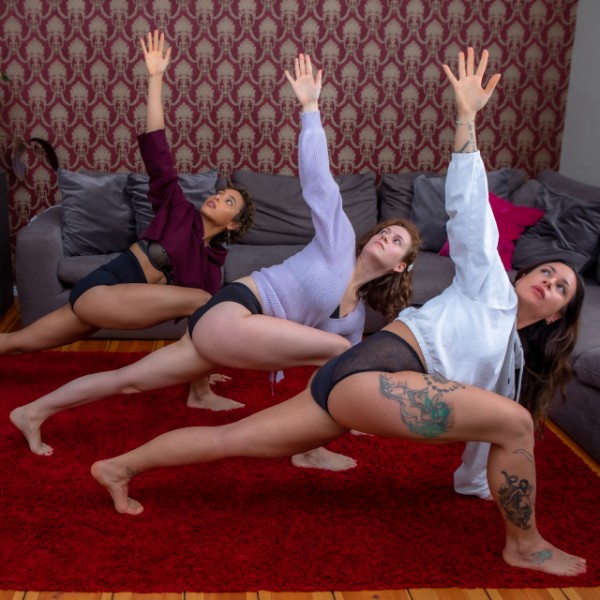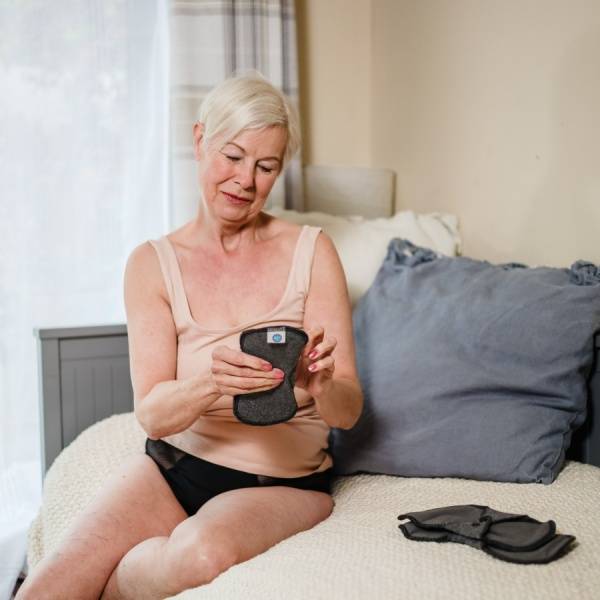10 Lifestyle Changes to Help You Manage Urinary Incontinence
Last Updated: 26/06/2024
Urinary incontinence, defined as the the involuntary leakage of urine, affects around 423 million people worldwide. Although it's most common in older people, incontinence can impact anyone. In fact, it is estimated to affect 1 in 3 people in their lifetime. Despite its prevalence, there is still a stigma around the condition, with lots of people embarrassed or ashamed to talk about it. The stigma around incontinence is a serious issue, as it stops lots of people from getting help. However, you don't need to suffer in silence! There are organisations and professionals who can provide support and guidance to improve your quality of life. There are also several lifestyle changes you can implement to alleviate the symptoms, which is what we're here to discuss.
To help urinary incontinence, you can:
1. Do Your Pelvic Floor Exercises Daily
Strengthening your pelvic floor muscles by exercising your pelvic floor correctly and consistently is one of the most effective ways to manage urinary incontinence. You perform these exercises by lifting, holding and then relaxing your pelvic floor muscles. Aim for at least three sets of 10 to 15 repetitions a day for best results; regular practice can significantly improve bladder control.
Some women find that using devices such as pelvic floor training weights make it easer and faster to build up strength over time.
Pelvic floor exercises aren't just for women either - men can really benefit from pelvic floor exercises too.
2. Exercise - But Choose the Right Exercises
Trust us, we've been there - you start to do 'Star Jumps' and have to dash out of class to empty your bladder, or face a trickle of wee down your leg! That's because high-impact exercise can increase pressure on your pelvic floor muscles, causing leaking urine. It's not just HIIT classes you have to worry about though, doing sit-ups can also cause this to happen.
For that reason, low-impact strengthening exercises such as pilates are recommended. This helps to strengthen your core muscles, which is brilliant for improving stress incontinence, without the risk of leaks.

3. Avoid Heavy Lifting
Any type of lifting can put strain on your pelvic floor muscles, so avoid it if possible. This is because, when you lift heavy objects, you engage your core muscles, which can strain the pelvic floor. This strain can weaken the muscles that control urination, leading to increased leakage.
If you must lift something heavy, use proper lifting techniques to minimise the strain on your pelvic floor. Bend at your knees and lift with your legs, not your back, and hold the object close to your body to better distribute the weight.
To be clear, that's not weight training in the gym, but also day to day things like, picking up your children or bags of shopping. If this is necessary, it's always a good idea to brace your pelvic floor muscles both before and during the action.
4. Lose Weight if You’re Overweight
Being overweight isn't great for your health for lots of reasons, but did you know it can contribute to incontinence too? That's because the pressure of fatty tissue on your bladder can weaken your pelvic floor muscles. Losing weight could really improve or remove your symptoms altogether.
- Adopt a balanced diet rich in fruits, vegetables, lean proteins, and whole grains. Avoid excessive calorie intake and focus on nutrient-dense foods.
- Engage in regular physical activity to promote weight loss and overall fitness. Activities like walking, swimming, and cycling are excellent options. Additionally, exercises that strengthen core muscles can provide added support to the pelvic floor.
- Consider working with a nutritionist or a fitness trainer to create a weight management plan that fits your lifestyle and health needs.
5. Reduce Caffeine Intake
Did you know that caffeine is a bladder irritant which can make incontinence worse and upset an overactive bladder? Switching or reducing caffeine is an easy way to help improve incontinence.
Despite what you may think, decaf coffee and tea taste just as good as caffeinated. Having made this switch, it's recommended to gradually replace your caffeinated drinks one by one. Going cold turkey on caffeine withdrawal is no fun as it can create a 10 day headache whilst your body adjusts.
Of course, caffeine isn't just found in tea and coffee, but also fizzy drinks, green tea, energy drinks and hot chocolate. Replace these with water and herbal or fruit teas, or their decaf versions.
6. Cut Down on Alcohol
Reducing your alcohol intake can also improve continence because alcohol is a diuretic, which means that it increases your urge to urinate. This can lead to more frequent trips to the bathroom and a higher risk of leakage. It can also irritate the bladder lining, leading to increased risk of incontinence.
While alcohol increases urine production, it also dehydrates you. This can create a cycle where you feel the need to drink more, leading to further bladder irritation and increased urination.
Cutting down your alcohol intake may help incontinence symptoms. Choose non-caffeinated, non-alcoholic beverages like herbal teas or water to stay hydrated without overburdening your bladder.
7. Drink Plenty of Water
Whilst you're considering what you drink, ensuring that you drink 6 to 8 glasses of fluid a day is also really important. We understand that you might avoid drinking fluid, thinking that it's making things worse, however by reducing your fluid intake, it can reduce your bladder capacity.
Bladder training, where you drink and hold liquid, rather than have a wee 'just in case' can really help with urge incontinence. In addition, not drinking enough can also cause constipation which can also impact urinary incontinence.
8. Avoid Spicy & Acidic Foods
Spicy and acidic foods, like curry, hot peppers, and citrus fruits, can irritate the bladder and worsen incontinence symptoms.
To manage incontinence, try reducing your intake of these foods. Keep a food diary to identify any specific triggers, and focus on a balanced diet that supports overall bladder health.
9. Prevent Constipation
If you suffer with constipation, a side effect of straining to have a poo is that it can weaken your pelvic floor muscles which makes urinary incontinence worse.
Avoid constipation by eating more fibre and exercising more if possible. It can also help to try adding linseeds to your diet which really helps with constipation during pregnancy.
10. Quit Smoking
If you smoke, you've got an increased risk of incontinence due to the strain that coughing puts on your pelvic floor muscles. Nicotine and other chemicals in cigarettes can also irritate the bladder lining, increasing the frequency and urgency of urination.
Quitting smoking improves cardiovascular health and lung function, which in turn can enhance your ability to exercise and maintain a healthy weight.
NHS Smokefree support services, are a free service which can help you to stop smoking.

All of these lifestyle changes will help to reduce your urinary incontinence symptoms, however they do take time to improve. During that time you may find it helpful to use reusable incontinence accessories to manage those little leaks.
What Are the Best Pads for Bladder Leaks?
The best pads for bladder leaks are pads which comfortable but not bulky which absorb fluid quickly to allow you to get on with your life. Nowadays, these aren't limited to disposable incontinence pads such as Tena as there are ranges of reusable incontinence pads and products available to help with mens incontinence, womens incontinence and children's incontinence Not only as these more comfortable to wear as they won't chafe like disposable pads, but they're much more eco-friendly. In addition, with many users needing 3 or 4 incontinence pads daily, switching to washable incontinence pads will save you money too.
We hope you've enjoyed this article and as always feedback and comments are welcome. You might also find these related articles useful:
- How to Help a Child with Daytime Wetting
- How Do You Clean Reusable Sanitary Pads?
- The Ultimate Guide to Reusable Incontinence Pants Which Are Stylish AND Smart
- Botox for Incontinence: Does It Help?
About the Author: Helen Rankin is founder of Cheeky Wipes & Cheeky Pants which have been at the forefront of delivering simple reusable products since 2008. Having had 4 children, her pelvic floor has been better days so she has been working on improving her pelvic floor strength for several years. Her team of customer services experts just LOVE to talk pee, poo and periods and pride themselves on helping consumers make the switch to reusables with their tailored help questionnaires. The company was recognised with the Queens Award in Sustainable Development in 2021.